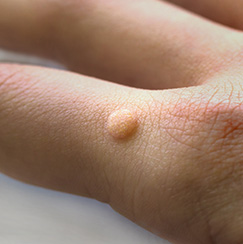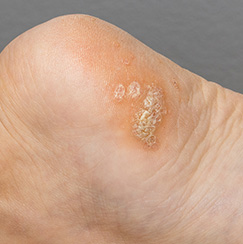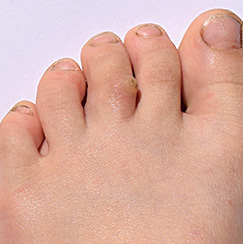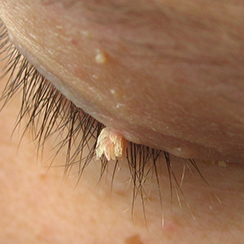Warts are benign (not cancerous) skin growths that appear when a virus infects the top layer of the skin. Viruses that cause warts are called human papillomavirus (HPV). You are more likely to get one of these viruses if you cut or damage your skin in some way.
Wart viruses are contagious. Warts can spread by contact with the wart or something that touched the wart.
A dermatologist can tell whether you have a wart by looking at it. In rare cases, a dermatologist may need to perform a skin biopsy to be certain.
Tieman Dermatology uses several types of treatments for warts. Ask us about cantharidin, cryosurgery, electrosurgery and curettage, and excision. We will, of course, make a recommendation after a thorough examination.
Grow most often on the fingers, around the nails, and on the backs of the hands.
Are more common where skin was broken, such as from biting fingernails or picking at hangnails.
Can have black dots that look like seeds (often called "seed" warts).
Most often feel like rough bumps.

Grow most often on the soles (plantar surface) of the feet
Can grow in clusters (mosaic warts)
Often are flat or grow inward (walking creates pressure, which causes the warts to grow inward)
Can hurt, feels like you have pebbles in your shoe
Can have black dots

Can occur anywhere. Children usually get them on the face. Men get these most often in the beard area, and women tend to get them on their legs.
Are smaller and smoother than other warts.
Tend to grow in large numbers, 20 to 100 at a time.

Looks like long threads or thin fingers that stick out
Often grows on the face: around the mouth, eyes, and nose
Often grow quickly

Warts often go away without treatment. This is especially true when children get warts. In adults, warts may not disappear as easily or as quickly as they do in children. Although most warts are harmless, Tieman Dermatology does treat them. Please make an appointment with Tieman Dermatology if you cannot get rid of the warts, the warts hurt, or you have many warts.